So, please, cast your mind
We ask:
Why does cycle commuting thrive in some London boroughs more than others
With @morciano_m @Marc_S05 @AUHE_Leeds @HEG_UEA
/1 https://doi.org/10.1016/j.ehb.2020.100945">https://doi.org/10.1016/j...
We use the amazing @UKDSCensus microdata:
 https://abs.twimg.com/emoji/v2/... draggable="false" alt="💥" title="Symbol für eine Kollision" aria-label="Emoji: Symbol für eine Kollision">a 5% population-representative sample of person-level #UKCensus records
https://abs.twimg.com/emoji/v2/... draggable="false" alt="💥" title="Symbol für eine Kollision" aria-label="Emoji: Symbol für eine Kollision">a 5% population-representative sample of person-level #UKCensus records
 https://abs.twimg.com/emoji/v2/... draggable="false" alt="🚴♀️" title="Radfahrende Frau" aria-label="Emoji: Radfahrende Frau">We include 11199 commuters where cycle is
https://abs.twimg.com/emoji/v2/... draggable="false" alt="🚴♀️" title="Radfahrende Frau" aria-label="Emoji: Radfahrende Frau">We include 11199 commuters where cycle is
the main mode & 305918 other commuters
& link them to geographic data
e.g.
 https://abs.twimg.com/emoji/v2/... draggable="false" alt="⛰️" title="Berg" aria-label="Emoji: Berg">hills
https://abs.twimg.com/emoji/v2/... draggable="false" alt="⛰️" title="Berg" aria-label="Emoji: Berg">hills
 https://abs.twimg.com/emoji/v2/... draggable="false" alt="💷" title="Banknote mit Pfund-Zeichen" aria-label="Emoji: Banknote mit Pfund-Zeichen">cycle infrastructure spend
https://abs.twimg.com/emoji/v2/... draggable="false" alt="💷" title="Banknote mit Pfund-Zeichen" aria-label="Emoji: Banknote mit Pfund-Zeichen">cycle infrastructure spend
/2
the main mode & 305918 other commuters
& link them to geographic data
e.g.
/2
Part of the answer lies in variation in population characteristics between boroughs
Commuter cycling was:
 https://abs.twimg.com/emoji/v2/... draggable="false" alt="🚴♀️" title="Radfahrende Frau" aria-label="Emoji: Radfahrende Frau">less common among women vs men
https://abs.twimg.com/emoji/v2/... draggable="false" alt="🚴♀️" title="Radfahrende Frau" aria-label="Emoji: Radfahrende Frau">less common among women vs men
 https://abs.twimg.com/emoji/v2/... draggable="false" alt="🚴♀️" title="Radfahrende Frau" aria-label="Emoji: Radfahrende Frau">much less common among most ethnic minority groups
https://abs.twimg.com/emoji/v2/... draggable="false" alt="🚴♀️" title="Radfahrende Frau" aria-label="Emoji: Radfahrende Frau">much less common among most ethnic minority groups
 https://abs.twimg.com/emoji/v2/... draggable="false" alt="😮" title="Gesicht mit offenem Mund" aria-label="Emoji: Gesicht mit offenem Mund">Even after controlling other area & person-level characteristics
https://abs.twimg.com/emoji/v2/... draggable="false" alt="😮" title="Gesicht mit offenem Mund" aria-label="Emoji: Gesicht mit offenem Mund">Even after controlling other area & person-level characteristics
/3
Commuter cycling was:
/3
Another explanation was variation in cycling infrastructure:
 https://abs.twimg.com/emoji/v2/... draggable="false" alt="💷" title="Banknote mit Pfund-Zeichen" aria-label="Emoji: Banknote mit Pfund-Zeichen">Borough-level cycling infrastructure spending (& #39;01 to & #39;11) was +ve associated with changes in cycling (& #39;01 to & #39;11) after controlling for population changes
https://abs.twimg.com/emoji/v2/... draggable="false" alt="💷" title="Banknote mit Pfund-Zeichen" aria-label="Emoji: Banknote mit Pfund-Zeichen">Borough-level cycling infrastructure spending (& #39;01 to & #39;11) was +ve associated with changes in cycling (& #39;01 to & #39;11) after controlling for population changes
 https://abs.twimg.com/emoji/v2/... draggable="false" alt="🧐" title="Gesicht mit Monokel" aria-label="Emoji: Gesicht mit Monokel">This relationship may vary by gender, ethnicity & SES
https://abs.twimg.com/emoji/v2/... draggable="false" alt="🧐" title="Gesicht mit Monokel" aria-label="Emoji: Gesicht mit Monokel">This relationship may vary by gender, ethnicity & SES
/4
/4
But here& #39;s a thing: we can& #39;t really judge if this spend was & #39;value for money& #39; without a comparison with:
 https://abs.twimg.com/emoji/v2/... draggable="false" alt="👉" title="Rückhand Zeigefinger nach rechts" aria-label="Emoji: Rückhand Zeigefinger nach rechts">economic evaluations of other cycling projects (we couldn& #39;t find any)
https://abs.twimg.com/emoji/v2/... draggable="false" alt="👉" title="Rückhand Zeigefinger nach rechts" aria-label="Emoji: Rückhand Zeigefinger nach rechts">economic evaluations of other cycling projects (we couldn& #39;t find any)
 https://abs.twimg.com/emoji/v2/... draggable="false" alt="👉" title="Rückhand Zeigefinger nach rechts" aria-label="Emoji: Rückhand Zeigefinger nach rechts">other health or transport projects (we couldn& #39;t reliably calculate health benefits or QALYs)
https://abs.twimg.com/emoji/v2/... draggable="false" alt="👉" title="Rückhand Zeigefinger nach rechts" aria-label="Emoji: Rückhand Zeigefinger nach rechts">other health or transport projects (we couldn& #39;t reliably calculate health benefits or QALYs)
/5
/5
And there are many other potential benefits of cycle infrastructure that we couldn& #39;t measure:
e.g.
 https://abs.twimg.com/emoji/v2/... draggable="false" alt="🚸" title="Kinder überqueren" aria-label="Emoji: Kinder überqueren">children cycling to school
https://abs.twimg.com/emoji/v2/... draggable="false" alt="🚸" title="Kinder überqueren" aria-label="Emoji: Kinder überqueren">children cycling to school
 https://abs.twimg.com/emoji/v2/... draggable="false" alt="🚴♀️" title="Radfahrende Frau" aria-label="Emoji: Radfahrende Frau">commuters cycling to the station
https://abs.twimg.com/emoji/v2/... draggable="false" alt="🚴♀️" title="Radfahrende Frau" aria-label="Emoji: Radfahrende Frau">commuters cycling to the station
 https://abs.twimg.com/emoji/v2/... draggable="false" alt="🏃♀️" title="Läuferin" aria-label="Emoji: Läuferin">lots of us doing more walking & running
https://abs.twimg.com/emoji/v2/... draggable="false" alt="🏃♀️" title="Läuferin" aria-label="Emoji: Läuferin">lots of us doing more walking & running
 https://abs.twimg.com/emoji/v2/... draggable="false" alt="🌇" title="Sonnenuntergang über Gebäuden" aria-label="Emoji: Sonnenuntergang über Gebäuden">nicer places to live & work
https://abs.twimg.com/emoji/v2/... draggable="false" alt="🌇" title="Sonnenuntergang über Gebäuden" aria-label="Emoji: Sonnenuntergang über Gebäuden">nicer places to live & work
Are there other limitations?
Yes https://abs.twimg.com/emoji/v2/... draggable="false" alt="👇" title="Rückhand Zeigefinger nach unten" aria-label="Emoji: Rückhand Zeigefinger nach unten">
https://abs.twimg.com/emoji/v2/... draggable="false" alt="👇" title="Rückhand Zeigefinger nach unten" aria-label="Emoji: Rückhand Zeigefinger nach unten">
/6
e.g.
Are there other limitations?
Yes
/6
P.S. We also drew concentration curves
 https://abs.twimg.com/emoji/v2/... draggable="false" alt="🚴" title="Person biking" aria-label="Emoji: Person biking">In London, cycle commuting was concentrated among higher socioeconomic groups & become more concentrated over time
https://abs.twimg.com/emoji/v2/... draggable="false" alt="🚴" title="Person biking" aria-label="Emoji: Person biking">In London, cycle commuting was concentrated among higher socioeconomic groups & become more concentrated over time
 https://abs.twimg.com/emoji/v2/... draggable="false" alt="🏴" title="Flagge von England" aria-label="Emoji: Flagge von England">Elsewhere in England it stayed concentrated among lower SES groups
https://abs.twimg.com/emoji/v2/... draggable="false" alt="🏴" title="Flagge von England" aria-label="Emoji: Flagge von England">Elsewhere in England it stayed concentrated among lower SES groups
(45° line if cycling were evenly distributed) https://abs.twimg.com/emoji/v2/... draggable="false" alt="👇" title="Rückhand Zeigefinger nach unten" aria-label="Emoji: Rückhand Zeigefinger nach unten">
https://abs.twimg.com/emoji/v2/... draggable="false" alt="👇" title="Rückhand Zeigefinger nach unten" aria-label="Emoji: Rückhand Zeigefinger nach unten">
(45° line if cycling were evenly distributed)
And finally -
Here& #39;s a quick overview of some nice commuter cycling studies we came across when doing this work
(1)
Lots of evidence showing
 https://abs.twimg.com/emoji/v2/... draggable="false" alt="⬆️" title="Pfeil nach oben" aria-label="Emoji: Pfeil nach oben">cycling=
https://abs.twimg.com/emoji/v2/... draggable="false" alt="⬆️" title="Pfeil nach oben" aria-label="Emoji: Pfeil nach oben">cycling= https://abs.twimg.com/emoji/v2/... draggable="false" alt="⬆️" title="Pfeil nach oben" aria-label="Emoji: Pfeil nach oben">health &
https://abs.twimg.com/emoji/v2/... draggable="false" alt="⬆️" title="Pfeil nach oben" aria-label="Emoji: Pfeil nach oben">health &  https://abs.twimg.com/emoji/v2/... draggable="false" alt="⬆️" title="Pfeil nach oben" aria-label="Emoji: Pfeil nach oben">wellbeing
https://abs.twimg.com/emoji/v2/... draggable="false" alt="⬆️" title="Pfeil nach oben" aria-label="Emoji: Pfeil nach oben">wellbeing
Most recently by @CHEyork @dukester24 https://doi.org/10.1002/hec.4184">https://doi.org/10.1002/h...
Here& #39;s a quick overview of some nice commuter cycling studies we came across when doing this work
(1)
Lots of evidence showing
Most recently by @CHEyork @dukester24 https://doi.org/10.1002/hec.4184">https://doi.org/10.1002/h...
(2)
Another using #UKCensus finds cycle vs car commuting is associated with:
 https://abs.twimg.com/emoji/v2/... draggable="false" alt="👉" title="Rückhand Zeigefinger nach rechts" aria-label="Emoji: Rückhand Zeigefinger nach rechts">20% lower rate of all-cause mortality
https://abs.twimg.com/emoji/v2/... draggable="false" alt="👉" title="Rückhand Zeigefinger nach rechts" aria-label="Emoji: Rückhand Zeigefinger nach rechts">20% lower rate of all-cause mortality
 https://abs.twimg.com/emoji/v2/... draggable="false" alt="👉" title="Rückhand Zeigefinger nach rechts" aria-label="Emoji: Rückhand Zeigefinger nach rechts">24% lower rate of CVD mortality
https://abs.twimg.com/emoji/v2/... draggable="false" alt="👉" title="Rückhand Zeigefinger nach rechts" aria-label="Emoji: Rückhand Zeigefinger nach rechts">24% lower rate of CVD mortality
 https://abs.twimg.com/emoji/v2/... draggable="false" alt="👉" title="Rückhand Zeigefinger nach rechts" aria-label="Emoji: Rückhand Zeigefinger nach rechts">16% lower rate of cancer mortality
https://abs.twimg.com/emoji/v2/... draggable="false" alt="👉" title="Rückhand Zeigefinger nach rechts" aria-label="Emoji: Rückhand Zeigefinger nach rechts">16% lower rate of cancer mortality
@anthonylav @CedarUK http://dx.doi.org/10.1016/S2542-5196(20)30079-6">https://dx.doi.org/10.1016/S...
Another using #UKCensus finds cycle vs car commuting is associated with:
@anthonylav @CedarUK http://dx.doi.org/10.1016/S2542-5196(20)30079-6">https://dx.doi.org/10.1016/S...
(3)
Similar to our study, Anna Goodman @JennaPanter @CedarUK used #UKCensus data to investigate the role of investment in English Cycle Demonstration Towns between & #39;01 & & #39;11
 https://abs.twimg.com/emoji/v2/... draggable="false" alt="👉" title="Rückhand Zeigefinger nach rechts" aria-label="Emoji: Rückhand Zeigefinger nach rechts">Commuter cycling increased by 0.69 percentage points vs control group towns https://doi.org/10.1016/j.socscimed.2013.08.030">https://doi.org/10.1016/j...
https://abs.twimg.com/emoji/v2/... draggable="false" alt="👉" title="Rückhand Zeigefinger nach rechts" aria-label="Emoji: Rückhand Zeigefinger nach rechts">Commuter cycling increased by 0.69 percentage points vs control group towns https://doi.org/10.1016/j.socscimed.2013.08.030">https://doi.org/10.1016/j...
Similar to our study, Anna Goodman @JennaPanter @CedarUK used #UKCensus data to investigate the role of investment in English Cycle Demonstration Towns between & #39;01 & & #39;11
(4)
Jinhyun Hong @UrbanBigData used @StravaMetro data to investigate new cycling infrastructure in Glasgow around the time of the Commonwealth Games between & #39;13 & & #39;16
 https://abs.twimg.com/emoji/v2/... draggable="false" alt="👉" title="Rückhand Zeigefinger nach rechts" aria-label="Emoji: Rückhand Zeigefinger nach rechts"> Monthly total volume of cycling trips made by app users increased by around 15% https://doi.org/10.1007/s11116-019-09988-4">https://doi.org/10.1007/s...
https://abs.twimg.com/emoji/v2/... draggable="false" alt="👉" title="Rückhand Zeigefinger nach rechts" aria-label="Emoji: Rückhand Zeigefinger nach rechts"> Monthly total volume of cycling trips made by app users increased by around 15% https://doi.org/10.1007/s11116-019-09988-4">https://doi.org/10.1007/s...
Jinhyun Hong @UrbanBigData used @StravaMetro data to investigate new cycling infrastructure in Glasgow around the time of the Commonwealth Games between & #39;13 & & #39;16
(5)
 https://abs.twimg.com/emoji/v2/... draggable="false" alt="🚴♀️" title="Radfahrende Frau" aria-label="Emoji: Radfahrende Frau">The Propensity to Cycle tool estimates how much commuter cycling would be required in specific towns and cities to meet specified national targets, after accounting for local factors
https://abs.twimg.com/emoji/v2/... draggable="false" alt="🚴♀️" title="Radfahrende Frau" aria-label="Emoji: Radfahrende Frau">The Propensity to Cycle tool estimates how much commuter cycling would be required in specific towns and cities to meet specified national targets, after accounting for local factors
@robinlovelace @ITSLeeds @CedarUK
https://doi.org/10.5198/jtlu.2016.862">https://doi.org/10.5198/j...
@robinlovelace @ITSLeeds @CedarUK
https://doi.org/10.5198/jtlu.2016.862">https://doi.org/10.5198/j...
(6)
Also using #UKCensus data, @RachelAldred finds that increasing cycling mode share is insufficient to create an inclusive cycling culture
 https://abs.twimg.com/emoji/v2/... draggable="false" alt="👉" title="Rückhand Zeigefinger nach rechts" aria-label="Emoji: Rückhand Zeigefinger nach rechts">It may be necessary to deliberately target cycling infrastructure towards currently under-represented groups https://doi.org/10.1080/01441647.2015.1014451">https://doi.org/10.1080/0...
https://abs.twimg.com/emoji/v2/... draggable="false" alt="👉" title="Rückhand Zeigefinger nach rechts" aria-label="Emoji: Rückhand Zeigefinger nach rechts">It may be necessary to deliberately target cycling infrastructure towards currently under-represented groups https://doi.org/10.1080/01441647.2015.1014451">https://doi.org/10.1080/0...
Also using #UKCensus data, @RachelAldred finds that increasing cycling mode share is insufficient to create an inclusive cycling culture

 Read on Twitter
Read on Twitter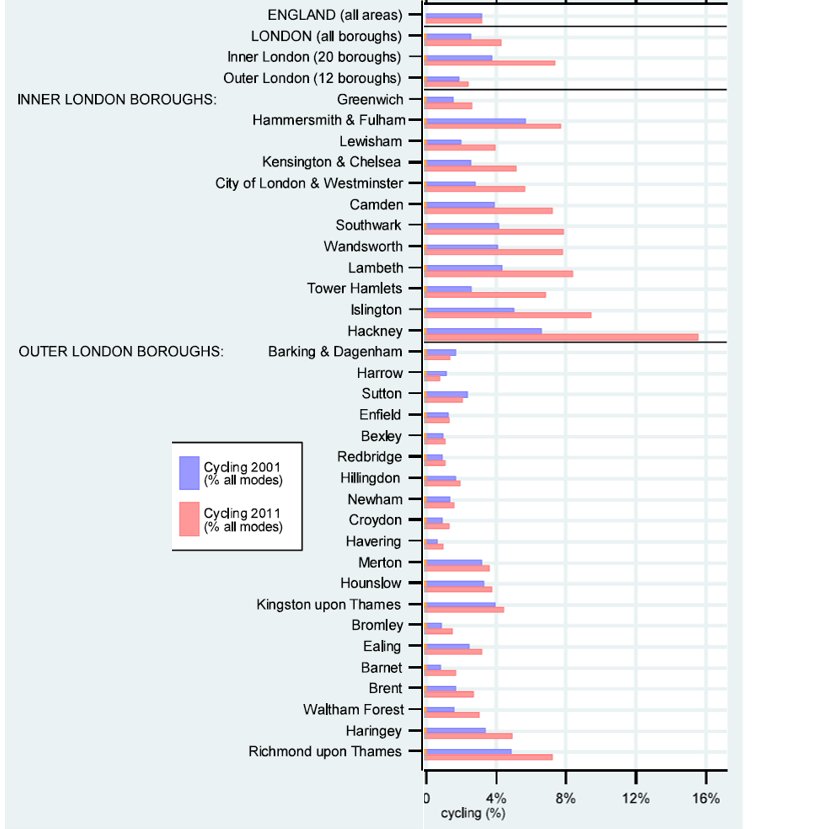 a 5% population-representative sample of person-level #UKCensus recordshttps://abs.twimg.com/emoji/v2/... draggable="false" alt="🚴♀️" title="Radfahrende Frau" aria-label="Emoji: Radfahrende Frau">We include 11199 commuters where cycle is the main mode & 305918 other commuters& link them to geographic datae.g.https://abs.twimg.com/emoji/v2/... draggable="false" alt="⛰️" title="Berg" aria-label="Emoji: Berg">hillshttps://abs.twimg.com/emoji/v2/... draggable="false" alt="💷" title="Banknote mit Pfund-Zeichen" aria-label="Emoji: Banknote mit Pfund-Zeichen">cycle infrastructure spend/2" title="We use the amazing @UKDSCensus microdata:https://abs.twimg.com/emoji/v2/... draggable="false" alt="💥" title="Symbol für eine Kollision" aria-label="Emoji: Symbol für eine Kollision">a 5% population-representative sample of person-level #UKCensus recordshttps://abs.twimg.com/emoji/v2/... draggable="false" alt="🚴♀️" title="Radfahrende Frau" aria-label="Emoji: Radfahrende Frau">We include 11199 commuters where cycle is the main mode & 305918 other commuters& link them to geographic datae.g.https://abs.twimg.com/emoji/v2/... draggable="false" alt="⛰️" title="Berg" aria-label="Emoji: Berg">hillshttps://abs.twimg.com/emoji/v2/... draggable="false" alt="💷" title="Banknote mit Pfund-Zeichen" aria-label="Emoji: Banknote mit Pfund-Zeichen">cycle infrastructure spend/2" class="img-responsive" style="max-width:100%;"/>
a 5% population-representative sample of person-level #UKCensus recordshttps://abs.twimg.com/emoji/v2/... draggable="false" alt="🚴♀️" title="Radfahrende Frau" aria-label="Emoji: Radfahrende Frau">We include 11199 commuters where cycle is the main mode & 305918 other commuters& link them to geographic datae.g.https://abs.twimg.com/emoji/v2/... draggable="false" alt="⛰️" title="Berg" aria-label="Emoji: Berg">hillshttps://abs.twimg.com/emoji/v2/... draggable="false" alt="💷" title="Banknote mit Pfund-Zeichen" aria-label="Emoji: Banknote mit Pfund-Zeichen">cycle infrastructure spend/2" title="We use the amazing @UKDSCensus microdata:https://abs.twimg.com/emoji/v2/... draggable="false" alt="💥" title="Symbol für eine Kollision" aria-label="Emoji: Symbol für eine Kollision">a 5% population-representative sample of person-level #UKCensus recordshttps://abs.twimg.com/emoji/v2/... draggable="false" alt="🚴♀️" title="Radfahrende Frau" aria-label="Emoji: Radfahrende Frau">We include 11199 commuters where cycle is the main mode & 305918 other commuters& link them to geographic datae.g.https://abs.twimg.com/emoji/v2/... draggable="false" alt="⛰️" title="Berg" aria-label="Emoji: Berg">hillshttps://abs.twimg.com/emoji/v2/... draggable="false" alt="💷" title="Banknote mit Pfund-Zeichen" aria-label="Emoji: Banknote mit Pfund-Zeichen">cycle infrastructure spend/2" class="img-responsive" style="max-width:100%;"/>
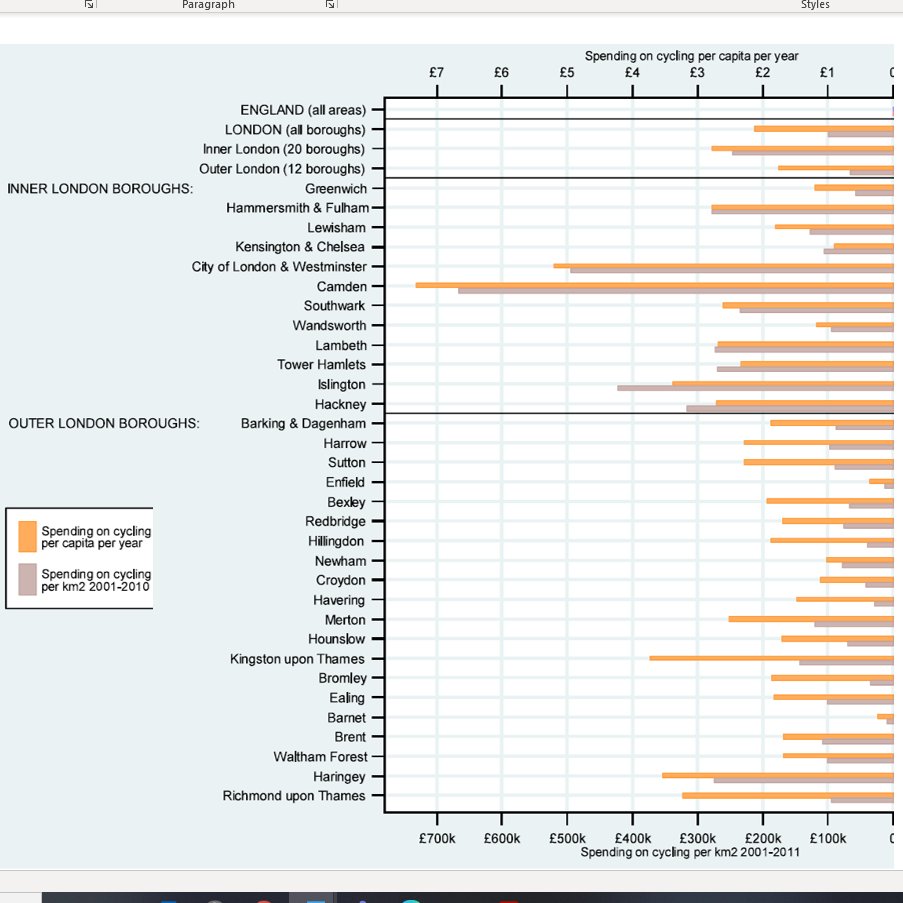 Borough-level cycling infrastructure spending (& #39;01 to & #39;11) was +ve associated with changes in cycling (& #39;01 to & #39;11) after controlling for population changeshttps://abs.twimg.com/emoji/v2/... draggable="false" alt="🧐" title="Gesicht mit Monokel" aria-label="Emoji: Gesicht mit Monokel">This relationship may vary by gender, ethnicity & SES/4" title="Another explanation was variation in cycling infrastructure:https://abs.twimg.com/emoji/v2/... draggable="false" alt="💷" title="Banknote mit Pfund-Zeichen" aria-label="Emoji: Banknote mit Pfund-Zeichen">Borough-level cycling infrastructure spending (& #39;01 to & #39;11) was +ve associated with changes in cycling (& #39;01 to & #39;11) after controlling for population changeshttps://abs.twimg.com/emoji/v2/... draggable="false" alt="🧐" title="Gesicht mit Monokel" aria-label="Emoji: Gesicht mit Monokel">This relationship may vary by gender, ethnicity & SES/4" class="img-responsive" style="max-width:100%;"/>
Borough-level cycling infrastructure spending (& #39;01 to & #39;11) was +ve associated with changes in cycling (& #39;01 to & #39;11) after controlling for population changeshttps://abs.twimg.com/emoji/v2/... draggable="false" alt="🧐" title="Gesicht mit Monokel" aria-label="Emoji: Gesicht mit Monokel">This relationship may vary by gender, ethnicity & SES/4" title="Another explanation was variation in cycling infrastructure:https://abs.twimg.com/emoji/v2/... draggable="false" alt="💷" title="Banknote mit Pfund-Zeichen" aria-label="Emoji: Banknote mit Pfund-Zeichen">Borough-level cycling infrastructure spending (& #39;01 to & #39;11) was +ve associated with changes in cycling (& #39;01 to & #39;11) after controlling for population changeshttps://abs.twimg.com/emoji/v2/... draggable="false" alt="🧐" title="Gesicht mit Monokel" aria-label="Emoji: Gesicht mit Monokel">This relationship may vary by gender, ethnicity & SES/4" class="img-responsive" style="max-width:100%;"/>
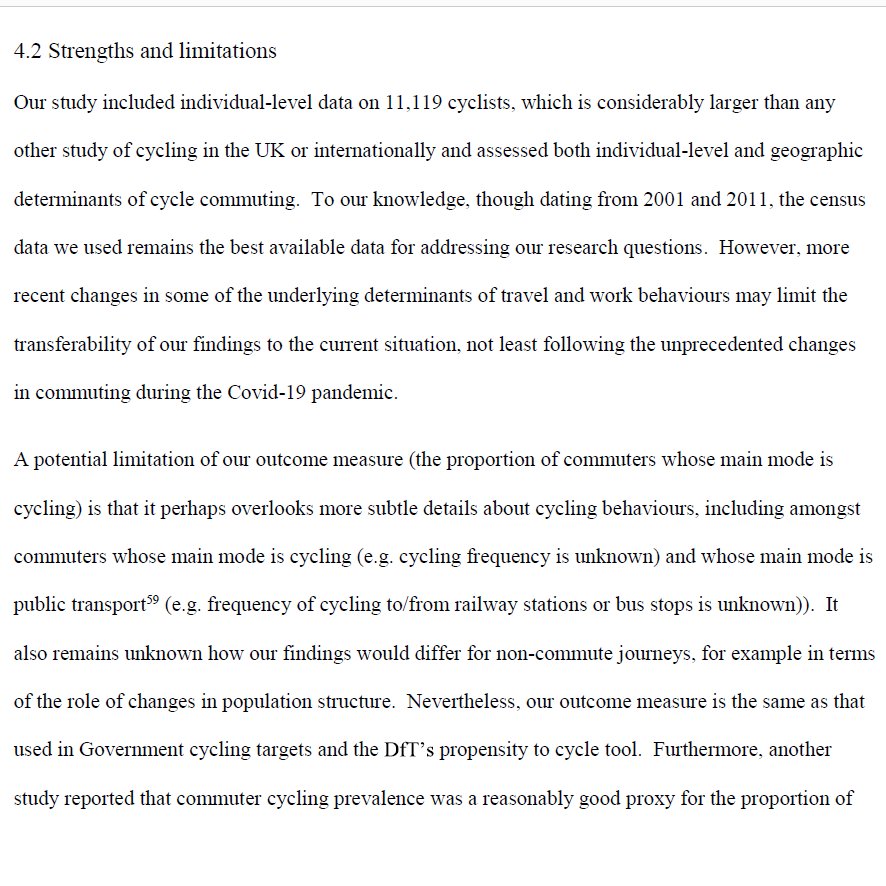 children cycling to schoolhttps://abs.twimg.com/emoji/v2/... draggable="false" alt="🚴♀️" title="Radfahrende Frau" aria-label="Emoji: Radfahrende Frau">commuters cycling to the stationhttps://abs.twimg.com/emoji/v2/... draggable="false" alt="🏃♀️" title="Läuferin" aria-label="Emoji: Läuferin">lots of us doing more walking & runninghttps://abs.twimg.com/emoji/v2/... draggable="false" alt="🌇" title="Sonnenuntergang über Gebäuden" aria-label="Emoji: Sonnenuntergang über Gebäuden">nicer places to live & workAre there other limitations?Yeshttps://abs.twimg.com/emoji/v2/... draggable="false" alt="👇" title="Rückhand Zeigefinger nach unten" aria-label="Emoji: Rückhand Zeigefinger nach unten">/6" title="And there are many other potential benefits of cycle infrastructure that we couldn& #39;t measure:e.g.https://abs.twimg.com/emoji/v2/... draggable="false" alt="🚸" title="Kinder überqueren" aria-label="Emoji: Kinder überqueren">children cycling to schoolhttps://abs.twimg.com/emoji/v2/... draggable="false" alt="🚴♀️" title="Radfahrende Frau" aria-label="Emoji: Radfahrende Frau">commuters cycling to the stationhttps://abs.twimg.com/emoji/v2/... draggable="false" alt="🏃♀️" title="Läuferin" aria-label="Emoji: Läuferin">lots of us doing more walking & runninghttps://abs.twimg.com/emoji/v2/... draggable="false" alt="🌇" title="Sonnenuntergang über Gebäuden" aria-label="Emoji: Sonnenuntergang über Gebäuden">nicer places to live & workAre there other limitations?Yeshttps://abs.twimg.com/emoji/v2/... draggable="false" alt="👇" title="Rückhand Zeigefinger nach unten" aria-label="Emoji: Rückhand Zeigefinger nach unten">/6">
children cycling to schoolhttps://abs.twimg.com/emoji/v2/... draggable="false" alt="🚴♀️" title="Radfahrende Frau" aria-label="Emoji: Radfahrende Frau">commuters cycling to the stationhttps://abs.twimg.com/emoji/v2/... draggable="false" alt="🏃♀️" title="Läuferin" aria-label="Emoji: Läuferin">lots of us doing more walking & runninghttps://abs.twimg.com/emoji/v2/... draggable="false" alt="🌇" title="Sonnenuntergang über Gebäuden" aria-label="Emoji: Sonnenuntergang über Gebäuden">nicer places to live & workAre there other limitations?Yeshttps://abs.twimg.com/emoji/v2/... draggable="false" alt="👇" title="Rückhand Zeigefinger nach unten" aria-label="Emoji: Rückhand Zeigefinger nach unten">/6" title="And there are many other potential benefits of cycle infrastructure that we couldn& #39;t measure:e.g.https://abs.twimg.com/emoji/v2/... draggable="false" alt="🚸" title="Kinder überqueren" aria-label="Emoji: Kinder überqueren">children cycling to schoolhttps://abs.twimg.com/emoji/v2/... draggable="false" alt="🚴♀️" title="Radfahrende Frau" aria-label="Emoji: Radfahrende Frau">commuters cycling to the stationhttps://abs.twimg.com/emoji/v2/... draggable="false" alt="🏃♀️" title="Läuferin" aria-label="Emoji: Läuferin">lots of us doing more walking & runninghttps://abs.twimg.com/emoji/v2/... draggable="false" alt="🌇" title="Sonnenuntergang über Gebäuden" aria-label="Emoji: Sonnenuntergang über Gebäuden">nicer places to live & workAre there other limitations?Yeshttps://abs.twimg.com/emoji/v2/... draggable="false" alt="👇" title="Rückhand Zeigefinger nach unten" aria-label="Emoji: Rückhand Zeigefinger nach unten">/6">
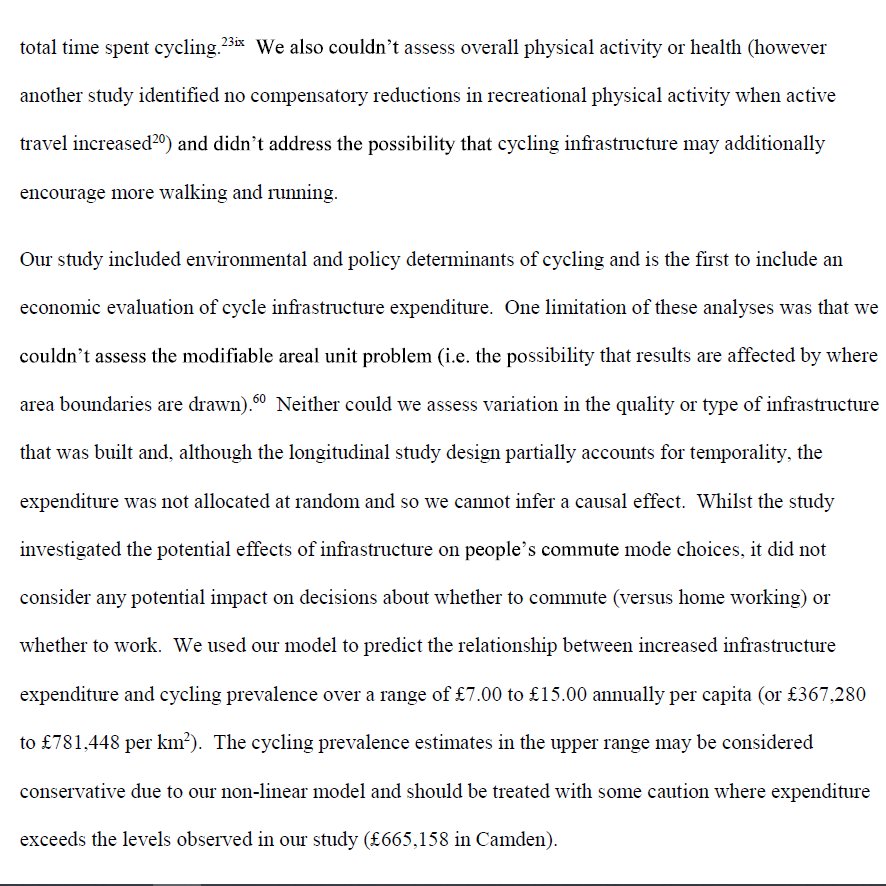 children cycling to schoolhttps://abs.twimg.com/emoji/v2/... draggable="false" alt="🚴♀️" title="Radfahrende Frau" aria-label="Emoji: Radfahrende Frau">commuters cycling to the stationhttps://abs.twimg.com/emoji/v2/... draggable="false" alt="🏃♀️" title="Läuferin" aria-label="Emoji: Läuferin">lots of us doing more walking & runninghttps://abs.twimg.com/emoji/v2/... draggable="false" alt="🌇" title="Sonnenuntergang über Gebäuden" aria-label="Emoji: Sonnenuntergang über Gebäuden">nicer places to live & workAre there other limitations?Yeshttps://abs.twimg.com/emoji/v2/... draggable="false" alt="👇" title="Rückhand Zeigefinger nach unten" aria-label="Emoji: Rückhand Zeigefinger nach unten">/6" title="And there are many other potential benefits of cycle infrastructure that we couldn& #39;t measure:e.g.https://abs.twimg.com/emoji/v2/... draggable="false" alt="🚸" title="Kinder überqueren" aria-label="Emoji: Kinder überqueren">children cycling to schoolhttps://abs.twimg.com/emoji/v2/... draggable="false" alt="🚴♀️" title="Radfahrende Frau" aria-label="Emoji: Radfahrende Frau">commuters cycling to the stationhttps://abs.twimg.com/emoji/v2/... draggable="false" alt="🏃♀️" title="Läuferin" aria-label="Emoji: Läuferin">lots of us doing more walking & runninghttps://abs.twimg.com/emoji/v2/... draggable="false" alt="🌇" title="Sonnenuntergang über Gebäuden" aria-label="Emoji: Sonnenuntergang über Gebäuden">nicer places to live & workAre there other limitations?Yeshttps://abs.twimg.com/emoji/v2/... draggable="false" alt="👇" title="Rückhand Zeigefinger nach unten" aria-label="Emoji: Rückhand Zeigefinger nach unten">/6">
children cycling to schoolhttps://abs.twimg.com/emoji/v2/... draggable="false" alt="🚴♀️" title="Radfahrende Frau" aria-label="Emoji: Radfahrende Frau">commuters cycling to the stationhttps://abs.twimg.com/emoji/v2/... draggable="false" alt="🏃♀️" title="Läuferin" aria-label="Emoji: Läuferin">lots of us doing more walking & runninghttps://abs.twimg.com/emoji/v2/... draggable="false" alt="🌇" title="Sonnenuntergang über Gebäuden" aria-label="Emoji: Sonnenuntergang über Gebäuden">nicer places to live & workAre there other limitations?Yeshttps://abs.twimg.com/emoji/v2/... draggable="false" alt="👇" title="Rückhand Zeigefinger nach unten" aria-label="Emoji: Rückhand Zeigefinger nach unten">/6" title="And there are many other potential benefits of cycle infrastructure that we couldn& #39;t measure:e.g.https://abs.twimg.com/emoji/v2/... draggable="false" alt="🚸" title="Kinder überqueren" aria-label="Emoji: Kinder überqueren">children cycling to schoolhttps://abs.twimg.com/emoji/v2/... draggable="false" alt="🚴♀️" title="Radfahrende Frau" aria-label="Emoji: Radfahrende Frau">commuters cycling to the stationhttps://abs.twimg.com/emoji/v2/... draggable="false" alt="🏃♀️" title="Läuferin" aria-label="Emoji: Läuferin">lots of us doing more walking & runninghttps://abs.twimg.com/emoji/v2/... draggable="false" alt="🌇" title="Sonnenuntergang über Gebäuden" aria-label="Emoji: Sonnenuntergang über Gebäuden">nicer places to live & workAre there other limitations?Yeshttps://abs.twimg.com/emoji/v2/... draggable="false" alt="👇" title="Rückhand Zeigefinger nach unten" aria-label="Emoji: Rückhand Zeigefinger nach unten">/6">
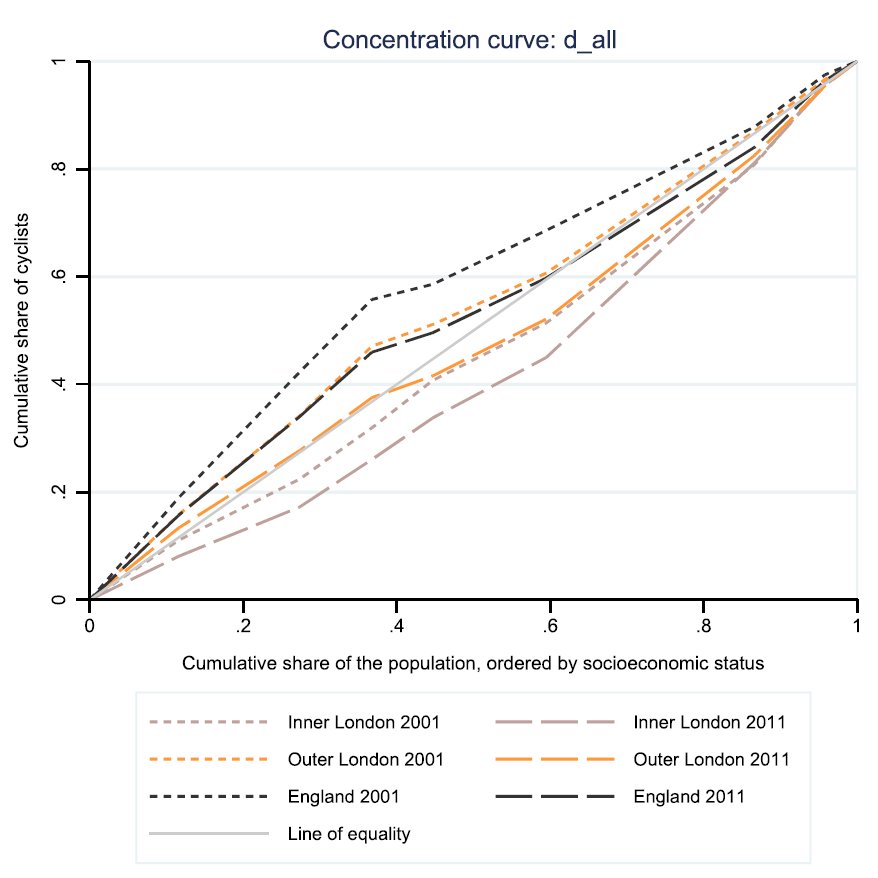 In London, cycle commuting was concentrated among higher socioeconomic groups & become more concentrated over timehttps://abs.twimg.com/emoji/v2/... draggable="false" alt="🏴" title="Flagge von England" aria-label="Emoji: Flagge von England">Elsewhere in England it stayed concentrated among lower SES groups(45° line if cycling were evenly distributed)https://abs.twimg.com/emoji/v2/... draggable="false" alt="👇" title="Rückhand Zeigefinger nach unten" aria-label="Emoji: Rückhand Zeigefinger nach unten">" title="P.S. We also drew concentration curveshttps://abs.twimg.com/emoji/v2/... draggable="false" alt="🚴" title="Person biking" aria-label="Emoji: Person biking">In London, cycle commuting was concentrated among higher socioeconomic groups & become more concentrated over timehttps://abs.twimg.com/emoji/v2/... draggable="false" alt="🏴" title="Flagge von England" aria-label="Emoji: Flagge von England">Elsewhere in England it stayed concentrated among lower SES groups(45° line if cycling were evenly distributed)https://abs.twimg.com/emoji/v2/... draggable="false" alt="👇" title="Rückhand Zeigefinger nach unten" aria-label="Emoji: Rückhand Zeigefinger nach unten">" class="img-responsive" style="max-width:100%;"/>
In London, cycle commuting was concentrated among higher socioeconomic groups & become more concentrated over timehttps://abs.twimg.com/emoji/v2/... draggable="false" alt="🏴" title="Flagge von England" aria-label="Emoji: Flagge von England">Elsewhere in England it stayed concentrated among lower SES groups(45° line if cycling were evenly distributed)https://abs.twimg.com/emoji/v2/... draggable="false" alt="👇" title="Rückhand Zeigefinger nach unten" aria-label="Emoji: Rückhand Zeigefinger nach unten">" title="P.S. We also drew concentration curveshttps://abs.twimg.com/emoji/v2/... draggable="false" alt="🚴" title="Person biking" aria-label="Emoji: Person biking">In London, cycle commuting was concentrated among higher socioeconomic groups & become more concentrated over timehttps://abs.twimg.com/emoji/v2/... draggable="false" alt="🏴" title="Flagge von England" aria-label="Emoji: Flagge von England">Elsewhere in England it stayed concentrated among lower SES groups(45° line if cycling were evenly distributed)https://abs.twimg.com/emoji/v2/... draggable="false" alt="👇" title="Rückhand Zeigefinger nach unten" aria-label="Emoji: Rückhand Zeigefinger nach unten">" class="img-responsive" style="max-width:100%;"/>


